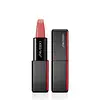What's inside
What's inside
 Key Ingredients
Key Ingredients

 Benefits
Benefits

 Concerns
Concerns

 Ingredients Side-by-side
Ingredients Side-by-side

Dimethicone
EmollientEthylhexyl Palmitate
EmollientSynthetic Wax
AbrasiveCI 77220
Cosmetic ColorantCaprylic/Capric Triglyceride
MaskingHydrogenated Olive Oil
Skin ConditioningKaolin
AbrasivePolyglyceryl-3 Diisostearate
EmulsifyingSilica
AbrasiveEuphorbia Cerifera Wax
Olea Europaea Fruit Oil
MaskingOlea Europaea Oil Unsaponifiables
Skin ConditioningSodium Hyaluronate
HumectantSesamum Indicum Seed Extract
Skin ConditioningTocopherol
AntioxidantStearalkonium Hectorite
Gel FormingDimethicone/Vinyl Dimethicone Crosspolymer
Skin ConditioningRicinus Communis Seed Oil
MaskingDimethyl Isosorbide
SolventPropylene Carbonate
SolventIsopropyl Titanium Triisostearate
EmollientHydrogenated Castor Oil
EmollientCI 77891
Cosmetic ColorantIron Oxides
CI 15850
Cosmetic ColorantCI 45410
Cosmetic ColorantCI 73360
Cosmetic ColorantCI 19140
Cosmetic ColorantCI 15985
Cosmetic ColorantCI 42090
Cosmetic ColorantDimethicone, Ethylhexyl Palmitate, Synthetic Wax, CI 77220, Caprylic/Capric Triglyceride, Hydrogenated Olive Oil, Kaolin, Polyglyceryl-3 Diisostearate, Silica, Euphorbia Cerifera Wax, Olea Europaea Fruit Oil, Olea Europaea Oil Unsaponifiables, Sodium Hyaluronate, Sesamum Indicum Seed Extract, Tocopherol, Stearalkonium Hectorite, Dimethicone/Vinyl Dimethicone Crosspolymer, Ricinus Communis Seed Oil, Dimethyl Isosorbide, Propylene Carbonate, Isopropyl Titanium Triisostearate, Hydrogenated Castor Oil, CI 77891, Iron Oxides, CI 15850, CI 45410, CI 73360, CI 19140, CI 15985, CI 42090
Mica
Cosmetic ColorantDimethicone
EmollientNeopentyl Glycol Dicaprate
EmollientPolyethylene
AbrasiveDiisostearyl Malate
EmollientSynthetic Fluorphlogopite
Titanium Dioxide
Cosmetic ColorantGlyceryl Diisostearate
EmollientCI 15850
Cosmetic ColorantMicrocrystalline Wax
Emulsion StabilisingTriisostearin
Skin ConditioningCI 77491
Cosmetic ColorantTrimethylolpropane Triethylhexanoate
EmollientCI 77492
Cosmetic ColorantCI 77499
Cosmetic ColorantMethicone
EmollientAluminum Hydroxide
EmollientTetradecene
EmollientSilica
AbrasivePolysilicone-2
Tocopherol
AntioxidantCalcium Stearate
Cosmetic ColorantSimethicone
EmollientBHT
AntioxidantCI 19140
Cosmetic ColorantCI 15985
Cosmetic ColorantCI 42090
Cosmetic ColorantMica, Dimethicone, Neopentyl Glycol Dicaprate, Polyethylene, Diisostearyl Malate, Synthetic Fluorphlogopite, Titanium Dioxide, Glyceryl Diisostearate, CI 15850, Microcrystalline Wax, Triisostearin, CI 77491, Trimethylolpropane Triethylhexanoate, CI 77492, CI 77499, Methicone, Aluminum Hydroxide, Tetradecene, Silica, Polysilicone-2, Tocopherol, Calcium Stearate, Simethicone, BHT, CI 19140, CI 15985, CI 42090
Ingredients Explained
These ingredients are found in both products.
Ingredients higher up in an ingredient list are typically present in a larger amount.
Ci 15850 is the pigment color red. It is an azo dye and created synthetically.
Azo dyes need to be thoroughly purified before use. This allows them to be more stable and longer-lasting.
This ingredient is common in foundations, lipsticks, and blushes. This color is described as brown/orangey red.
It has many secondary names such as Red 6 and Red 7. According to a manufacturer, Red 6 usually contains aluminum.
Learn more about CI 15850Ci 15985 is a dye made from petroleum. It is synthetically created and approved by the FDA for use in foods and cosmetics.
The color of this dye is orange/yellow.
This ingredient can be found in makeup, sun care, and skincare.
Learn more about CI 15985CI 19140 is also known as Tartrazine. Tartrazine is a synthetic dye used in cosmetics, foods, and medicine to add a yellow color.
Tartrazine is created from petroleum and is water-soluble.
Some people may experience allergies from this dye, especially asthmatics and those with an aspirin intolerance.
Learn more about CI 19140Ci 42090 is a synthetic dye created from petroleum. It is used to give a bright blue color to cosmetics, medicine, and food.
Dimethicone is a type of synthetic silicone created from natural materials such as quartz.
What it does:
Dimethicone comes in different viscosities:
Depending on the viscosity, dimethicone has different properties.
Ingredients lists don't always show which type is used, so we recommend reaching out to the brand if you have questions about the viscosity.
This ingredient is unlikely to cause irritation because it does not get absorbed into skin. However, people with silicone allergies should be careful about using this ingredient.
Note: Dimethicone may contribute to pilling. This is because it is not oil or water soluble, so pilling may occur when layered with products. When mixed with heavy oils in a formula, the outcome is also quite greasy.
Learn more about DimethiconeSilica, also known as silicon dioxide, is a naturally occurring mineral. It is used as a fine, spherical, and porous powder in cosmetics.
Though it has exfoliant properties, the function of silica varies depending on the product.
The unique structure of silica enhances the spreadability and adds smoothness, making it a great texture enhancer.
It is also used as an active carrier, emulsifier, and mattifier due to its ability to absorb excess oil.
In some products, tiny microneedles called spicules are made from silica or hydrolyzed sponge. When you rub them in, they lightly polish away dead skin layers and enhance the penetration of active ingredients.
Learn more about SilicaTocopherol (also known as Vitamin E) is a common antioxidant used to help protect the skin from free-radicals and strengthen the skin barrier. It's also fat soluble - this means our skin is great at absorbing it.
Vitamin E also helps keep your natural skin lipids healthy. Your lipid skin barrier naturally consists of lipids, ceramides, and fatty acids. Vitamin E offers extra protection for your skin’s lipid barrier, keeping your skin healthy and nourished.
Another benefit is a bit of UV protection. Vitamin E helps reduce the damage caused by UVB rays. (It should not replace your sunscreen). Combining it with Vitamin C can decrease sunburned cells and hyperpigmentation after UV exposure.
You might have noticed Vitamin E + C often paired together. This is because it is great at stabilizing Vitamin C. Using the two together helps increase the effectiveness of both ingredients.
There are often claims that Vitamin E can reduce/prevent scarring, but these claims haven't been confirmed by scientific research.
Learn more about Tocopherol